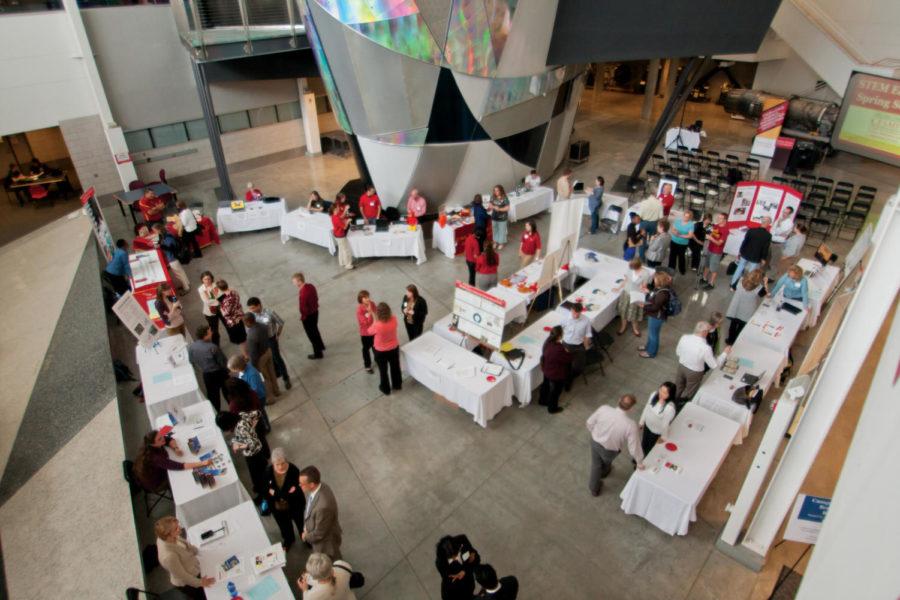Campus programs and resource fair focuses on STEM education
April 4, 2012
Faculty, staff, post-doctorate and several university programs collaborated to host the first Campus Programs and Broader Impacts Resource Fair, which focused on the programs of science, technology, engineering and mathematics, or STEM.
The fair was a joint effort between university programs and Strengthening the Professoriate [SP@ISU]. The need for the fair became clear in order to reach the goals of SP@ISU.
According to the SP@ISU website, its goal is to “strengthen the professoriate by enabling professional development in the STEM areas while promoting and enhancing a community of scholars and learners.”
In its second year, SP@ISU has sponsored workshops and events in order to help staff in STEM programs work to create “broader impacts” in the STEM fields through funding by a grant from the National Science Foundation.
Much of the focus of SP@ISU and the foundation is to help scientists understand the broader impact of their research on society.
Bonnie Bowen, executive director of the ISU Advance transition team, explained the importance for professors and faculty to do research, but also use science to effect society.
“Showing schoolchildren things related to science; communicating science to others like high school teachers is an example of a broader impact,” Bowen said.
Helping people understand the goals of science is also important. “Things like medicine and biochemistry have implications on us all,” Bowen said.
The fair was also designed to help facilitate faculty in writing grant proposals.
“One thing we have found is that many STEM faculty are not well trained in interacting with programs, and that this is necessary as a part of grant writing,” said Megan Heitmann, program assistant for SP@ISU.
Not all grant writers are members of STEM faculty, but the grants help fund many STEM education and program initiatives.
“We want to help faculty have the tools to be more successful as scientists to have broader impacts on science,” Bowen said.
Several programs in the STEM fields at Iowa State were represented at the fair. The Louis Stokes Alliance for Minority Participation attended the fair, hoping to get faculty in the STEM fields involved with its program.
“Our goal of the fair is to get faculty that will want to take in assistants from some underrepresented minorities into their organizations and corporations,” said Danielle Mitchell, a representative for the Louis Stokes Alliance at Iowa State.
The alliance also works with other area universities and community colleges to enhance minority participation in STEM fields. A presence at the fair was vital to establish more of a presence and increase mentoring programs.
ISU Advance, a program focused on increasing the participation and advancement of women in academic sciences and engineering careers, also worked toward integrating programs connected with STEM to reach out to sciences.
After a push by faculty, the fair was designed to help programs like Advance and the Louis Stokes Alliance come together and collaborate with others. Bowen described the event as “one-stop” shopping for faculty to consult and discuss options for collaboration.
“SP@ISU is like an umbrella grant created to enhance communication and help faculty do something to create broader impacts,” Bowen said.

















